Does Keratoconus Cause Eye Pain?

AUTHOR
Ophthalmologist/ Eye Surgeon 13+ Years Exp
MBBS, MS – Ophthalmology
TSMC- TSMC/FMR/05251 (2018)
CONDITION
CALL US 24/7 FOR ANY HELP
GET IN TOUCH ON
If you’ve been diagnosed with keratoconus or suspect you might have it, you’re likely trying to understand its effects on your eyes and daily life. Among the questions you might have is, “Does keratoconus cause eye pain?” It’s an important and valid concern, and we’re here to answer that for you in depth.
Spoiler alert? While keratoconus isn’t typically known for causing direct, intense eye pain, certain factors related to the condition can lead to discomfort. This blog will walk you through the relationship between keratoconus and eye pain, what might be causing it, and more importantly, how to manage or prevent it.
What Exactly is Keratoconus?
Keratoconus is a progressive eye condition where the cornea, which is the transparent, dome-shaped front part of your eye, becomes thinner and bulges outward into a cone shape. The cornea is like the eye’s window, helping to focus light for clear vision. When it changes shape, light entering the eye gets scattered, leading to blurry or distorted vision.
But here’s the next natural question—we know keratoconus affects vision, but can it physically hurt? The short answer is “sometimes,” depending on the individual and the stage of progression.
Common Causes of Eye Pain in People With Keratoconus
Keratoconus doesn’t always directly cause pain, but certain complications or related conditions can make your eyes feel uncomfortable or even hurt at times. Here are the main culprits to consider:
1. Contact Lens Issues
If you’re managing keratoconus, chances are you rely on specialty contact lenses like rigid gas permeable (RGP), scleral, or hybrid lenses to correct your vision. These lenses sit differently on the eye compared to regular soft contacts. While they’re effective, some people experience discomfort or even minor pain if the lenses don’t fit correctly or if they rub against the more irregular corneal surface.
- Example: Imagine wearing shoes that don’t quite fit right. The constant friction or tightness might cause discomfort. The same holds true for poorly fitted lenses over a bulging or thinning cornea.
2. Chronic Dry Eyes
Keratoconus can sometimes co-exist with other eye issues, like dry eye syndrome. With an irregular corneal surface, your eyes might struggle to distribute tears effectively. This can cause a gritty, scratchy sensation or even soreness throughout the day.
3. Eye Rubbing
One thing many keratoconus patients have in common is frequent eye rubbing. Perhaps it’s allergies, irritation, or just a reflex due to discomfort. But here’s the problem—even though it might provide fleeting relief, rubbing your eyes too much can worsen the thinning of your cornea. Worse, it can cause inflammation or small scratches on your eye’s surface, leading to pain or soreness.
4. Advanced Keratoconus
When keratoconus reaches its later stages, the cornea can become highly thin, and small cracks might develop in its layers. If there’s a sudden buildup of fluid in the cornea (a condition called hydrops), it can lead to swelling and significant discomfort, along with a dramatic loss of clear vision.
5. Corneal Scarring
Severe or advanced keratoconus might lead to scarring of the cornea. Although scarring itself isn’t always painful, it can cause irritation, sensitivity to light, and discomfort as scarred areas may not smooth out well under contact lenses.
How to Differentiate Between Discomfort and a Bigger Problem?
While some level of discomfort can come with managing keratoconus, it’s important to know when what you’re experiencing might need medical attention.
Consider these indicators as a guideline:
- Mild Discomfort: A slight dry, scratchy, or tired feeling in the eyes that resolves with lubricating eye drops or resting your eyes.
- Moderate Pain: If your lenses feel uncomfortable throughout the day or you experience ongoing light sensitivity that interferes with daily activities.
- Severe Pain: Sharp, persistent pain or an increase in redness and swelling. This could signal an infection, corneal damage, or complications like hydrops, and you should reach out to an eye specialist immediately.
How to Relieve Keratoconus-Related Eye Pain?
The good news is, you can take steps to manage discomfort linked to keratoconus and keep your eyes feeling better. Here’s what you can do:
1. Reassess Your Contact Lens Fit
Specialty lenses are a crucial tool for managing keratoconus, but they must fit properly. If your lenses feel uncomfortable, visit your eye doctor to ensure they’re fitted precisely to your eyes. Switching to scleral lenses can also be a game-changer for people who experience chronic discomfort with RGP lenses.
2. Lubricate Your Eyes
Over-the-counter lubricating eye drops (preferably preservative-free) can help relieve dryness, especially if you’re prone to gritty sensations. It’s an easy habit that can pay off in reducing day-to-day discomfort.
3. Quit Eye Rubbing
This one’s a biggie. Rubbing might feel instinctive, but it can aggravate keratoconus symptoms and even worsen your condition over time. If allergies or itchiness are to blame, speak with your doctor about antihistamine eye drops.
4. Stick to Regular Eye Exams
Your eye care provider needs to monitor your keratoconus regularly. This helps them address issues before they lead to more significant pain or damage. If treatments like corneal cross-linking (CXL) are recommended, they can help stabilize keratoconus and prevent worsening symptoms.
5. Protect Your Eyes
Wearing sunglasses outdoors can shield your eyes from UV light, which can exacerbate irritation or discomfort. If your eyes are prone to dryness or strain, take breaks from screen time and ensure you use sufficient lighting while reading or working.
Living with Keratoconus Comfortably
Remember, pain or discomfort doesn’t have to define life with keratoconus. By staying proactive in managing your condition, you can significantly reduce its effects on your daily activities. Many people with keratoconus—even those with advanced cases—live fully functional lives thanks to proper care and treatment.
⇒When Should You See an Eye Specialist?
While occasional discomfort can be managed with at-home remedies, any sharp or persistent pain deserves immediate attention. If you’re noticing symptoms like significant redness, changes in your vision, swelling, or light sensitivity that gets worse, don’t wait. These could signal complications that need treatment, like hydrops or an infection.
Don’t Ignore Your Eye Health
Managing keratoconus can feel overwhelming at first, especially with symptoms like eye discomfort or pain. But armed with the right knowledge and support, you can take control of your eye health and protect your vision for the future.
If you’re experiencing discomfort or want to learn more about managing keratoconus, don’t hesitate to consult an eye specialist. An expert can provide tailored advice and recommend solutions ranging from corrective lenses to advanced treatments like cross-linking.
Your eyes deserve the best care. Take the first step to clearer vision and peace of mind by booking a consultation today. You don’t have to deal with this alone—we’re here to help!
AUTHOR
Ophthalmologist/ Eye Surgeon 13+ Years Exp
MBBS, MS – Ophthalmology
TSMC- TSMC/FMR/05251 (2018)
CONDITION
CALL US 24/7 FOR ANY HELP
GET IN TOUCH ON



